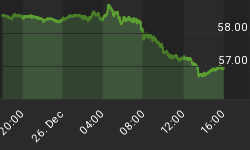In every annual budget debate since the 1980s, one side figures out that the way to get what it wants - which is higher spending - is to frame the request in a particular, ingenious way: We have to borrow and spend way more now if we want to borrow and spend way less later. History has of course proven this argument to be idiotic, but because it moves the pain of living within our means into the indefinite future, it always manages to attract enough votes to win the day.
The following article, published today by a major news outlet, spells it out in one sentence, in the title no less:
Why federal debt may have to explode before it shrinks
(CBS) - On Tuesday night, President Donald Trump will address a joint session of Congress for the first time. For a country still suffering from bitter political divisions after a contentious election, it's doubtful his speech will heal still-raw emotions. Especially since Mr. Trump has hinted that he'll discuss his budget plan, including a big statement on infrastructure spending and sharp cuts to federal agencies.
No matter what you think of President Trump -- whether you see him as a buffoon, a wannabe despot or the savior who'll finally Make America Great Again -- here's one big reason you should have some sympathy for him: He faces the worst fiscal outlook of any recent president.
He has taken office with the national debt nearing $20 trillion and debt held by the public above $14 trillion. According to the Committee for a Responsible Federal Budget (CRFB), debt is at a higher levels as a share of the economy than for any incoming president since Harry Truman in 1945 (chart below). Yet unlike Truman, who was handed an economy demobilizing from the fight against the Japan and Nazi Germany, the national debt is expected to continue to rise during Trump's presidency and beyond.
Moreover, federal spending on entitlements and interest payments represents a larger share of the budget than under any other president, leaving Mr. Trump with far less room on the "discretionary" side of the budget. Adding a sense of urgency to all of this, three federal trust funds -- covering highways, Social Security Disability and Medicare Hospital Insurance -- are headed for insolvency over the next eight years, with a fourth set for depletion in 2030 (Social Security Old-Age Trust).
That complicates the tax reform effort the president championed on the campaign trail and touted again recently, saying his tax plan would be something "phenomenal," with details to come within weeks. What we already know: Mr. Trump and Republicans in Congress want a simplification of the tax code and a cut in overall tax rates for households and corporations.
A tax cut will surely worsen the deficit over the near term. Yet it could also be necessary for invigorating the economy and quickening the growth needed to fix the long-term fiscal outlook. However, the efficacy of a tax cut providing fiscal stimulus is a matter of intense debate, to put it lightly, with economists evenly split on the subject according to a recent survey.
For Mr. Trump, perhaps the only way out of this fiscal bind is by worsening it temporarily, mixing a well-designed tax reduction and reform plan with targeted spending cuts and entitlement reform. No easy task. But a survey of the literature, including this 2014 paper from the Brookings Institution, suggests benefits can result from simplifying the tax code, lowering rates, and cutting "unproductive" federal spending.
According to Deutsche Bank economist Joseph LaVorgna, although the current economic expansion has been feeble and is now in its eighth year, there "remains considerable room for cyclical gains in consumption."
With the unemployment rate below 5 percent, LaVorgna doesn't believe job growth alone can do the trick. But a combination of personal tax cuts and wage inflation -- driven by corporate tax reforms like full expensing that encourages capital spending and labor productivity gains -- could do it.
Notice how the analysis begins by acknowledging the problem of soaring debt in order to soften up fiscal conservatives for the big reveal: That even right-wing think tanks and major banks agree on the need to generate "wage inflation" and "cyclical gains in consumption" via much higher government borrowing.
Since growth is always seen as anemic by those who crave higher tax revenues, this is an ever-green argument that always seems to fit the times and so always ends up being enacted, not just in the US but pretty much everywhere.
Which explains how, 40 years in, we find ourselves here:
Global sovereign debt to hit new all-time high - S&P
(Reuters) - Worldwide sovereign debt is set to reach a new record high of $44 trillion this year despite a slight reduction in governments' annual borrowings, an estimate from credit ratings agency S&P Global said on Friday.
The United States at $2.2 trillion and Japan at over $1.8 trillion, will again be the most prolific borrowers this year, accounting for 60 percent of the total, followed by China, Italy, and France. Britain's post-Brexit double downgrade will mean the percentage of world debt now with a top grade ‘triple-A' rating will fall to an all-time low of just 7 percent down from around 13 percent a year ago. S&P's calculations also showed
Japan faces by far the highest debt rollover ratio this year, reaching a sum equivalent to 66 percent or two thirds of the size its economy.
The solution? More borrowing, of course -- with, as always, bipartisan support.

















